Are you in the market for some new transport for your horse? Wondering about the best way to sort the wheat from the chaff? Then look no further. If you want some great advice on buying used horse trailers then we’ve got you covered.
For many horse owners, buying an expensive new horse trailer simply isn’t an option – particularly when there are so many bargains to be had in the second-hand market. But of course, you’ll want something safe and reliable as well as affordable.
There are so many used horse trailers for sale you’re sure to find something to suit your needs and budget. But whatever you do, before you make that final deal and load up your precious cargo, there are important checks to be made first.
Whether you choose to buy through a private sale or an established dealership, take along our handy 20-point checklist for buying a second-hand horse trailer whenever you go to view any potential purchase.
It’s the perfect methodical approach to evaluating used horse trailers and you won’t regret using it. It might even save you from a costly mistake.
Contents
- Have you done your research?
- Check the weight – know your towing limits
- Does your driving licence allow you to tow this trailer?
- Know the dimensions – is it the right size trailer for your horse?
- First impressions – giving used trailers the once-over
- Are the floors and ramps firm and secure?
- Check hinges and clasps for smooth operation
- Inspect the roof for leaks
- Are the partitions and padding up to scratch?
- Get a good view out of windows and hatches
- Are interior and exterior lights in full working order?
- Decent ventilation is a breath of fresh air
- Check tyres and suspension are ready for a smooth journey
- Inspect the jockey wheel and hitch for safe coupling
- Trailer brakes and breakaway cable
- Check security marks
- Does the seller have proof of ownership?
- Take the used horse trailer for a test drive to check it tows evenly
- Does the trailer have a good service or maintenance history?
- Get a receipt and ask about a warranty

-
Have you done your research?
The security and comfort of your horse is paramount when it comes to investing in used horse trailers. But you’ll also need it to be compatible with your towing vehicle, have sufficient storage for all your gear and fit into your equestrian lifestyle.
Clearly someone who is going to be travelling long distances with multiple horses is going to have different requirements to someone who just needs it for a sole horse to make occasional trips to local competitions and events.
But with such a wide variety of styles, models, quality and brands of horse trailer on the market it can be bewildering looking for the perfect example. That’s why it’s so important you put in the time researching to discover what’s best for your needs and budget.
From popular market leaders like Ifor Williams and Equi-Trek to the lightweight French-built Cheval Liberté or the highly regarded Boeckmann, all trailers will have their pros and cons and some will fit your requirements better than others. Knowing your way around the different makes and models will make it far easier for you to spot potential problems.
Read reviews from trusted sources and ask around to find out what works for other people in similar situations to you. Transporting a horse can be a stressful experience, both for you and your equine friend, but having the right kind of trailer will make things so much easier.
Building a good relationship between your horse and any used horse trailers is a vital part of making sure your equine is as easy to load as possible. Having the right trailer is the perfect way to keep your horse calm during travel.
-
Check the weight – know your towing limits
With a wide range of used horse trailer sizes on offer, from single horse to four horse diagonal loading, knowing your needs and the towing capacity of your tow vehicle is vital. Before the viewing, check the trailer and towing vehicle are suitable and the combination doesn’t exceed the legal weight limits. Double check in the manufacturer’s handbook for both your towing vehicle and trailer – many of these are easily available online.
It's against the law for a towing vehicle and its trailer to exceed the maximum weight limit as specified by the manufacturer. The maximum weights for your towing vehicle should be displayed on a manufacturer’s plate or sticker usually fixed to the inside of the passenger door frame.
The plate will give you several figures you need to be aware of. The gross vehicle weight is the maximum weight of the vehicle on its own plus its load. Next, you’ll have a gross train weight (or gross combination weight) which is the maximum weight of the vehicle plus any trailer that is attached (and its load). It’s vital these weights are not exceeded and include EVERYTHING (passenger, driver, horses, fuel, feed, water, tack…).
A used horse trailer may itself also have a plate that will show similar information regarding the maximum weight they can carry. Exceeding this maximum payload limit is asking for trouble and the Department for Transport has produced guidance that is essential reading. After all, being too heavy can create handling problems for the driver, safety issues for your horse and can lead to potentially deadly repercussions.
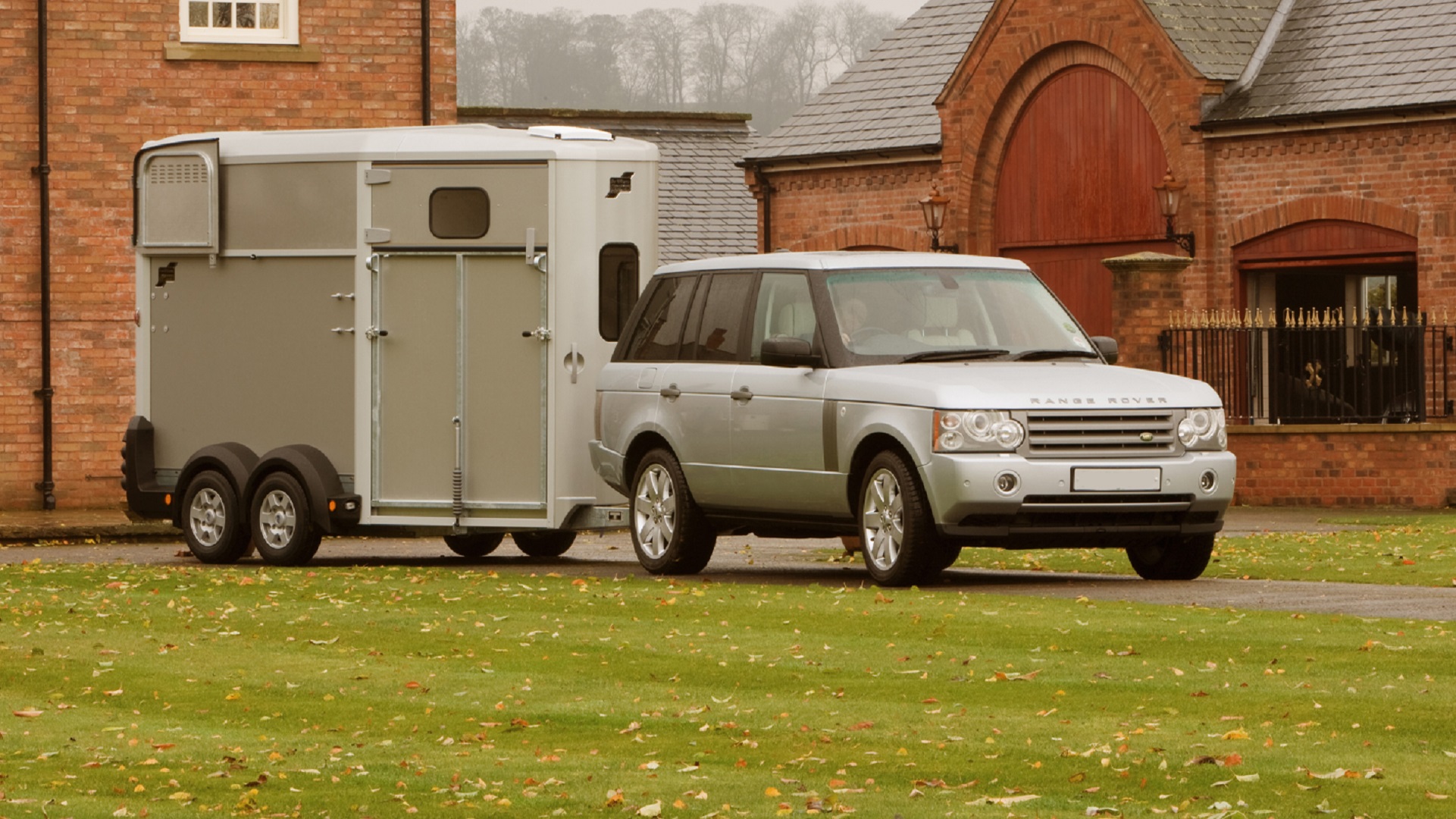
-
Does your driving licence allow you to tow this trailer?
When driving on public roads, towing a horse trailer can require a different category of driving licence. Depending on the vehicle and trailer combination you might even need to take a further driving test to drive legally.
The type of licence you need depends on the Maximum Authorised Mass (MAM) found on the manufacturer's plate. Check the government website to see what ‘entitlements’ each licence category grants you. This VOSA leaflet aimed at horsebox and trailer owners is also invaluable.
Those drivers who passed their driving test on or after 1st January 1997, can only drive Category B vehicles. If you wish to drive any other type of vehicle, then additional tests are required. Category B is defined as vehicles up to 3,500kg MAM towing a trailer up to 750kg MAM (such as a small garden trailer).
You can also tow heavier trailers with a MAM exceeding 750kg, provided the following conditions are met:
- The vehicle and trailer do not exceed 3,500kg in weight.
- The weight of the trailer does not exceed the unladen weight of the towing vehicle.
This means that to tow anything other than a very light horse trailer, you’ll need Category B+E on your licence. This requires a driver to take an additional test. There are further details on the B+E test on the government website.
-
Know the dimensions – is it the right size trailer for your horse?
Pretty basic we know, but it can be an easy mistake to make, especially if you’re buying a trailer for the first time. Viewing used horse trailers can get tiring and if you’re in a hurry you might make a bad decision.
Be sure to measure not only your equine friend’s height but also from the tip of their nose to the tail and from shoulder to shoulder. It really is the only way to be certain that any trailer you’re looking at is a perfect fit.
Remember, during transportation, it’s vital that your horse is able to keep their balance. If not, damage to the trailer and serious injury to your horse could occur. To balance, your horse needs to be able to spread its legs and use both its neck and head for stability.
If the stall space inside the trailer is too short, they must balance themselves using their right front and left hind legs when the vehicle speeds up and slows down. This will soon cause soreness, fatigue and even lameness over a prolonged time – and will make your horse more difficult to load in future.
Getting adequate headroom is also important, allowing for your horses’ full height over the largest area. The more headroom your horse has, the less restricted they’ll feel, and it provides better ventilation.
Horses like to stand in different positions when being transported, whereas some manufacturers only consider the peak of a curved roof as its maximum height. Look for a trailer so that no matter where your horse stands, they’ll have plenty of headroom.
-
First impressions – giving used trailers the once over
When you first arrive to look at a horse trailer it’s all too easy to get carried away – but first impressions really do count. Whether through nervousness or excitement it’s easy to miss early warning signs.
Double check the description in the ad, how accurate is it? If the seller has been less than forthcoming with the truth in the advert what other unpleasant surprises might you discover further along the road?
Take your time to really look around the outside of the trailer first to spot any obvious signs of damage. This includes rust, dents and bumps, scratches, damp patches and any sign of rotting. Start checking seals for any possible water damage.
How does the trailer look in general? Is it clean and tidy and well maintained? While faded paint can be expected, the owner who’s made minimum effort to keep the trailer looking good might not have maintained the more important mechanical and electrical systems either. On the flipside, a freshly painted trailer could be a sign of the owner trying to hide something more sinister.
And think twice about wearing your best clothes when viewing used horse trailers. Depending on where the trailer is kept, it can soon become a dirty business. You’ll need to get down and have a good look under the trailer with a decent torch.
It’s far better to find rust, dents, and other signs of damage or general neglect now rather than later. Be on the lookout for oil leaks from the axle housing, loose or missing bolts, exposed or broken wiring or any other broken structures.
While you’re down there start your inspection of the underside of the floor. If it's made of wood, then you’ll want to be on a careful lookout for any rot.
Don’t be frightened to poke a screwdriver into any questionable spots – if the floor is hard and sound then the screwdriver shouldn't make an impression. A trailer with a rotten floor is not a safe investment. Also look out for any rust or corrosion under a metal floor.
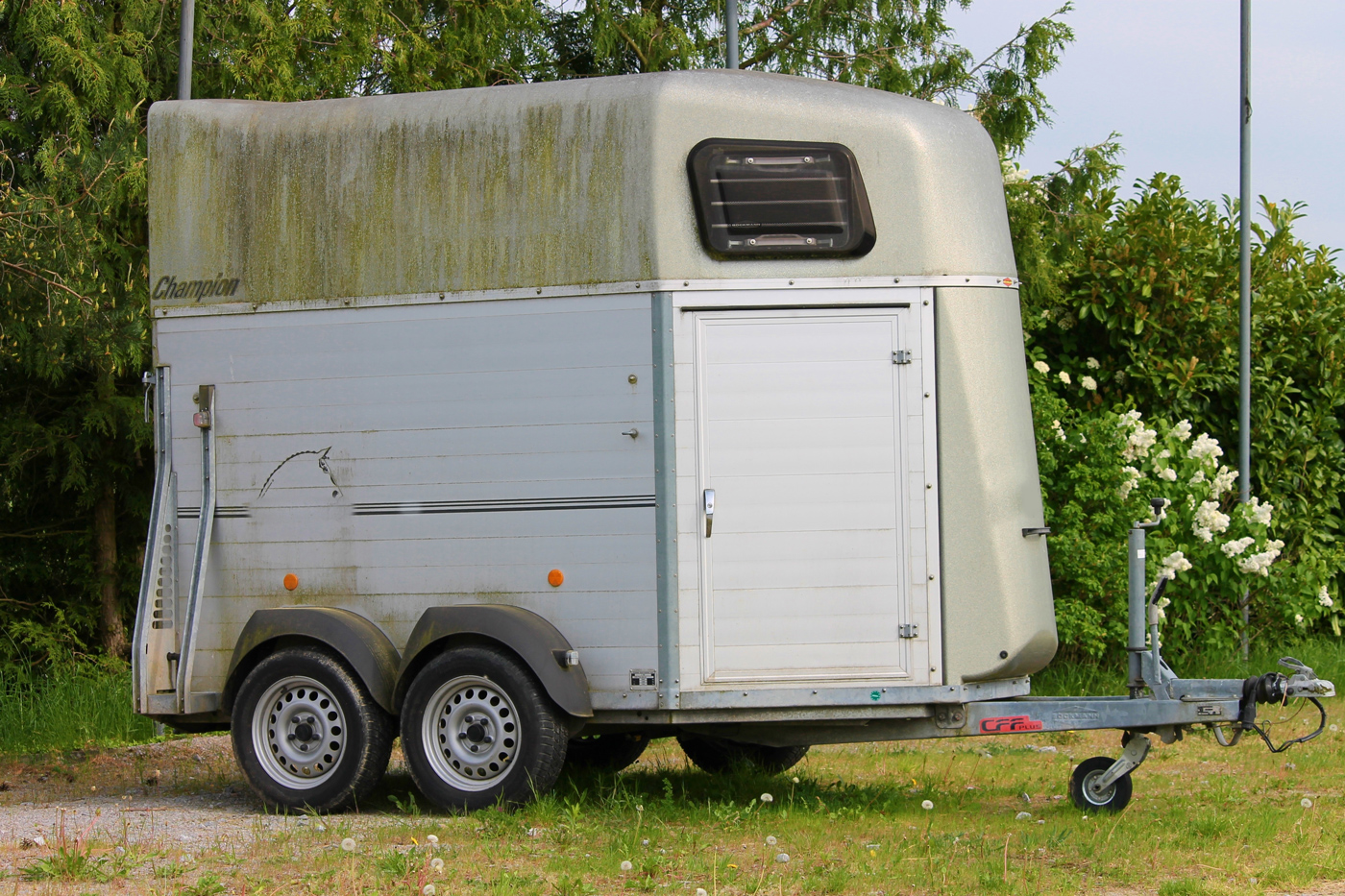
-
Are the floors and ramps firm and secure?
Once you’ve inspected the outside, and you’re happy, you’ll want to move on to the interior. As any horse lover knows, loading and unloading a horse can be difficult at the best of times, but features like wide entries, low steps and steady ramps can all make a big difference.
On the other hand, loading ramps with gradual slopes, made with a non-slip, strong surface are very popular. Checking the floors and ramps now will mean your horse is more likely to be loaded and unloaded without mishap.
Here’s your chance to give the floor a thorough inspection. Walk on it, even jump on it if you want. Pull up any rubber matting so you can see everything clearly. If you do see any holes or feel any soft spots underfoot, walk away.
This could be a sign of rot. The thought of your beloved horse putting a foot through a weak floor when you’re driving at speed does not bear thinking about!
-
Check hinges and clasps for smooth operation
Horses are spirited and sensitive creatures and can easily become stressed before, during and after travel. This can have a damaging effect on a horse’s wellbeing, so anything to keep them calm is to be welcomed.
For example, check that all latches, hinges and clasps can all be operated quickly, smoothly and quietly. An owner struggling with a stiff or rusted latch, or a ramp hinge squeaking loudly when the horse is loaded can easily raise their stress levels.
And it’s not just the horse you need to be thinking of. If you’re using a loading ramp, then make sure the ramp hinges and balance springs are working and that the ramp can easily be managed by one person. Struggling to lift a heavy ramp when you’re alone and the light is low could lead to a nasty injury.
-
Inspect the roof for leaks
After checking the floor, remember to look up and inspect the roof as well. Check for stains on the ceiling or down the walls and wet spots on the floor. Vents and seams are common places to see cracks so check these carefully.
The roof of a trailer that leaks can mean a ruined grooming job on your horse at the very least. It can also make for uncomfortable, unsafe travelling, a slippery floor and soaked tack. If the leaks have gone unremedied for long enough then it can lead to structural damage and costly repairs to your trailer at a later date.
While roof repairs can be relatively straightforward it’s better to know now so you can take the costs into account when you’re haggling on the price.
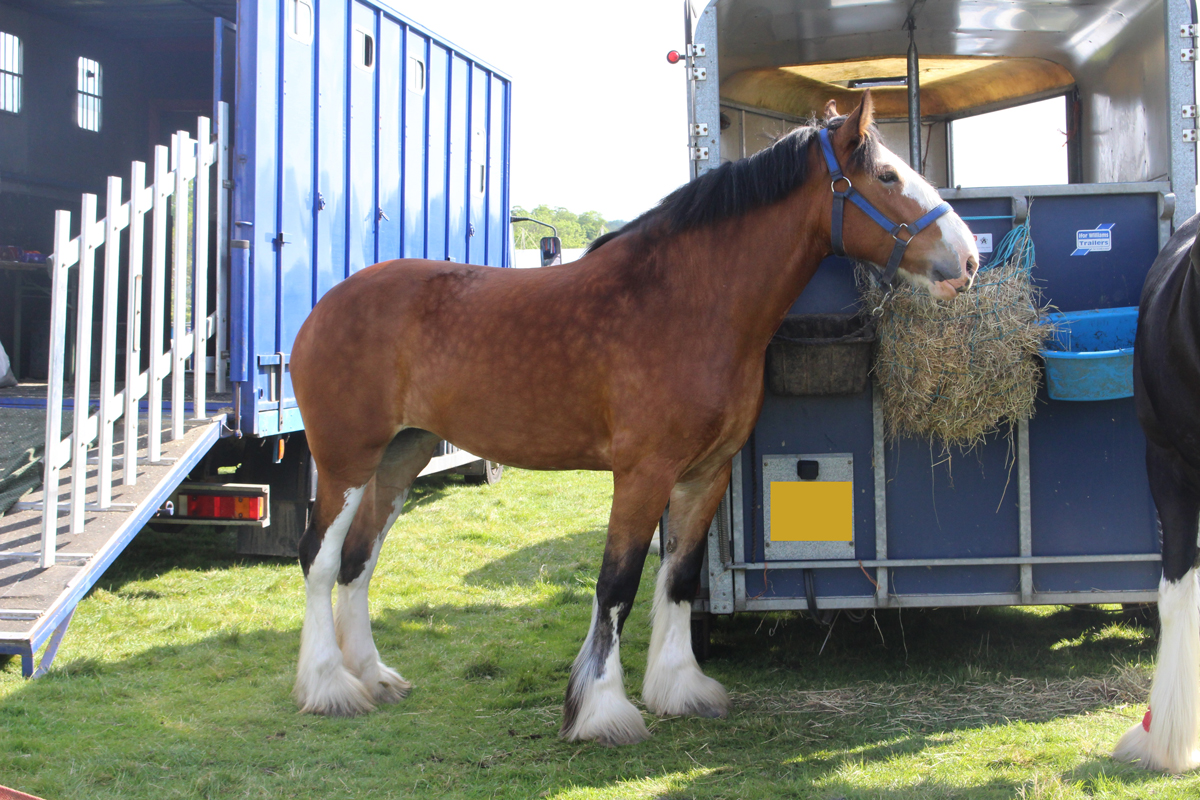
-
Are the partitions and padding up to scratch?
As with many things horse-related there is often discussion about the benefits or otherwise of travelling with partitions.
Whatever your view, any partitions or breast/breech bars should all be checked to make sure all the pins are in place and there are no sharp edges or rips in the partition or padding that could injure your horse. Spend some time on the interior checking if the partitions are secure.
How are they removed and adjusted and do they work smoothly? Spend a few minutes getting familiar with their operation.
Advances in modern technology and materials mean that safety is always at the forefront of the latest horse trailer designs. The used horse trailer you’re viewing could even offer emergency-release breast bars, or automatic breech bars to make loading safer for all involved. If this is the case, then check these safety features are working properly.
While you’re at it, check everything else on the inside. Are all possible points of contact between horse and trailer well-cushioned and in good condition? Are there any missing attachments for the hay feeder? Is there a rust-free and water-tight water tank present?
-
Can you get a good view out of windows and hatches?
Horses like to travel in many different ways and all have their own particular quirks that keep them calm and content when loading and on the road. Something all horses enjoy is being able to see out of the trailer.
Trailer windows and hatches are a great way for a horse to do a bit of sightseeing along the way and often make them more willing to enter the trailer.
But if windows are scratched, cracked and generally in poor condition then this won’t provide quality viewing for the horse. Sometimes it can be the subtle things that make the most difference to a horse’s quality of life.
-
Are interior and exterior lights in full working order?
No matter what the weather, season or time of day, it’s vital for road safety that your trailer is visible to other road users. You may not be an electrical expert but you need to at least check that the socket connecting the car and trailer lights has not corroded and is still working correctly.
Once you’re hitched up, turn the car on and check that all the trailer’s lights are present, secure and work properly.
Use a friend to make sure the brake lights come on. Test the indicators, reversing and hazard lights, too. If the trailer has interior lighting, make sure it works. A dark, unlit trailer can make it harder to load a horse quickly and safely.
The trailer also needs to be easily visible when it’s not attached to the car, so check all reflectors are present, of the right type and colour, in decent condition, clean, and secure.
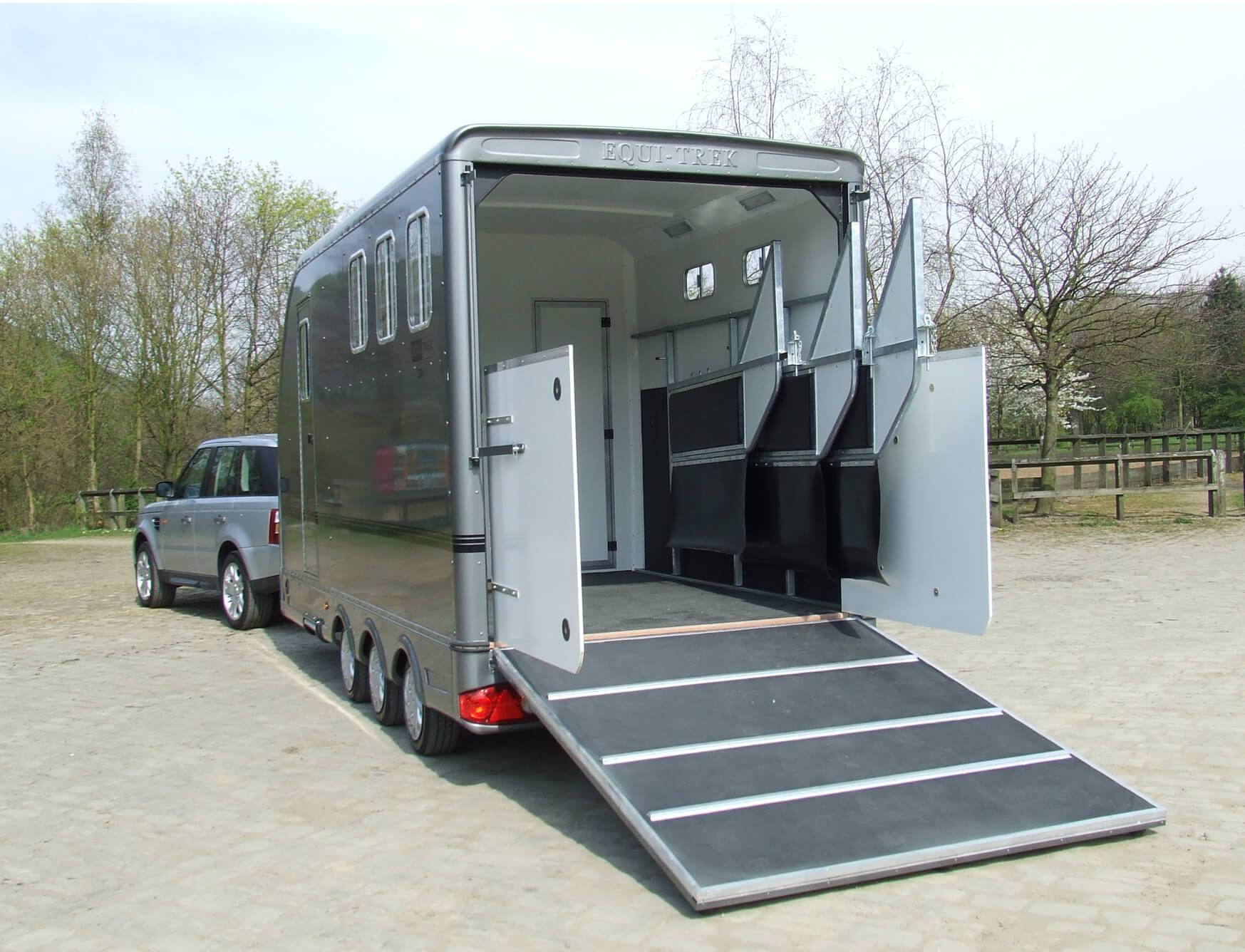
-
Decent ventilation is a breath of fresh air
Having a good flow of air through a horse trailer is an important part of keeping horses calm and stress-free during travel. While some trailers have an open design with plenty of ventilation for the warmer months, others may not have.
Providing adequate ventilation whatever the season via windows and/or roof vents is so important that you need to make sure everything is working. Make sure all windows or roof vents can be easily opened, closed, or left partially open.
Remember that without proper ventilation in the used horse trailer, a horse can become stressed from the high temperature or even develop an illness like heat exhaustion or shipping fever (pleuropneumonia). Don’t let poor ventilation put your horse’s health in jeopardy.
-
Check tyres and suspension are ready for a smooth journey
Just as with any vehicle, checking the tyres with an old-fashioned kick is not going to help. You need to check all tyres, including the spare, to make sure they’ve got a good amount of tread left (a minimum of 1.6mm across 75% of the wheel breadth – though more than 3mm is ideal).
After all, you don’t want to be spending money on new tyres. Check tyre pressure, and look out for any bulges, lumps or cuts in the rubber.
Even if the tread and condition seem fine, check for any uneven wear as it could signal a suspension problem with the trailer.
A dodgy suspension coupled with old tyres will not lead to the optimal shock absorption for gentle travelling. A sure-fire recipe for a stressed and likely exhausted horse on arrival. Now’s the time to quiz the seller on any suspension problems.
Another indicator of a suspension problem is if the trailer is parked on level ground but it leans to one side. The British Horse Society advises owners to always seek professional advice if you're worried about the suspension.
Finally, check the exterior spare wheel and carrier are both secure and in good condition. You don’t want to get stuck with a flat tyre and no spare with your horse far from home!
-
Inspect the jockey wheel and hitch for safe coupling
The connection between the trailer and tow vehicle is vital for safe transportation of horses. So, you’ll want to make sure there’s no problems in this area.
Now’s a good time to get the seller or dealer to take you through the procedure for coupling your vehicle and trailer. This is important as equipment changes over time and you don’t want to make a mistake.
Reversing a horse trailer can be a tricky proposition even at the best of times. If the coupling is not secure then a costly accident awaits.
Take the opportunity to carefully inspect the coupler. As far as you can see, are all the parts there and in good working order? Are the safety chains attached and in decent shape? If you can see signs of obvious damage then take extra care as fixing a damaged coupler is only for the professionals. Does the hitch cup look as though it has been cleaned and greased regularly and properly maintained?
Once the trailer and tow vehicle are coupled, check how secure the tow hitch is by winding down the jockey wheel. The rear of the vehicle will lift slightly – this is normal. The jockey wheel must always be locked into position when fully up with a safety pin.
Is this still present? Now is also the time to check the electrical connections are working and that any cables are free from dragging or snagging.
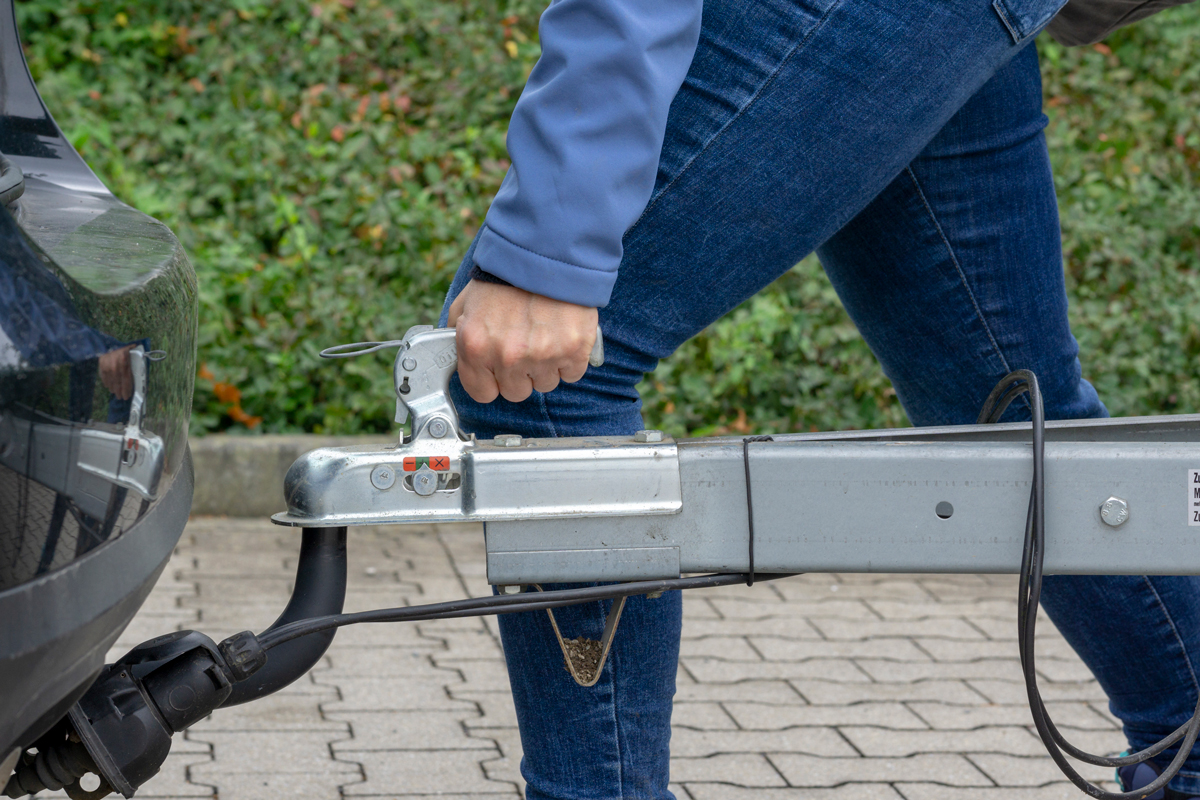
-
Trailer brakes and breakaway cable
Perhaps surprisingly, the UK has no trailer MOT test so the safety and legality of a used horse trailer comes entirely down to the owner. And while some owners take this very seriously, others don’t. Trailer brakes should have been checked regularly, so ask the seller if this has been done.
Breakaway cables are a legal requirement for all trailers. The purpose of this cable is to activate the trailer brakes if the trailer becomes unhitched for any reason. The cable must be clipped to a purpose-made towbar ring or another substantial part of the vehicle.
Make sure there is no damage along the length of the cable. Check it cannot snag or become taut during normal use, and the fixings are all present and in good order. If there are any problems with the brakes or breakaway cable, you’ll need to make a trip to a professional mechanic for help.
-
Check security marks
Theft of equine property such as tack and horse trailers is an unfortunately common hazard of owning a horse. So, once you’ve thoroughly inspected the trailer for sale and you’re satisfied it’s in roadworthy condition, then you’ll need to check it’s not stolen.
Horse trailer theft is all too common in the UK. So, if you’re looking for a used horse trailer, the chances are some of the ads you see might be for stolen trailers. It’s always better to find out now, because if a trailer is subsequently revealed to be stolen it could be seized by the police or an insurance company.
While trailers in the UK don’t need registration documents, to combat theft they are security marked by manufacturers with unique serial numbers. The manufacturer’s plate should still be fitted and readable, if it’s not then walk away. Many manufacturers place this on the A-frame. If you can’t find it then call the manufacturer or call The Equipment Register (TER) on 01225 464599. They can tell you where it should be located.
Check the serial number on the plate is the same as the number stamped on the chassis. If the used horse trailer is an Ifor Williams then call the company on 01490 412527 with the code to confirm its identity.
You could also check the serial number with the police to see if it has been reported stolen.
-
Does the seller have proof of ownership?
Ask the seller for proof of ownership such as a purchase invoice, instruction book, safety instructions and so on. Another thing to consider is where are you viewing the trailer?
Never view, buy or meet the seller in a public place away from their home or dealership premises. If you find yourself in a car park, lay-by or service station then alarm bells should be ringing.
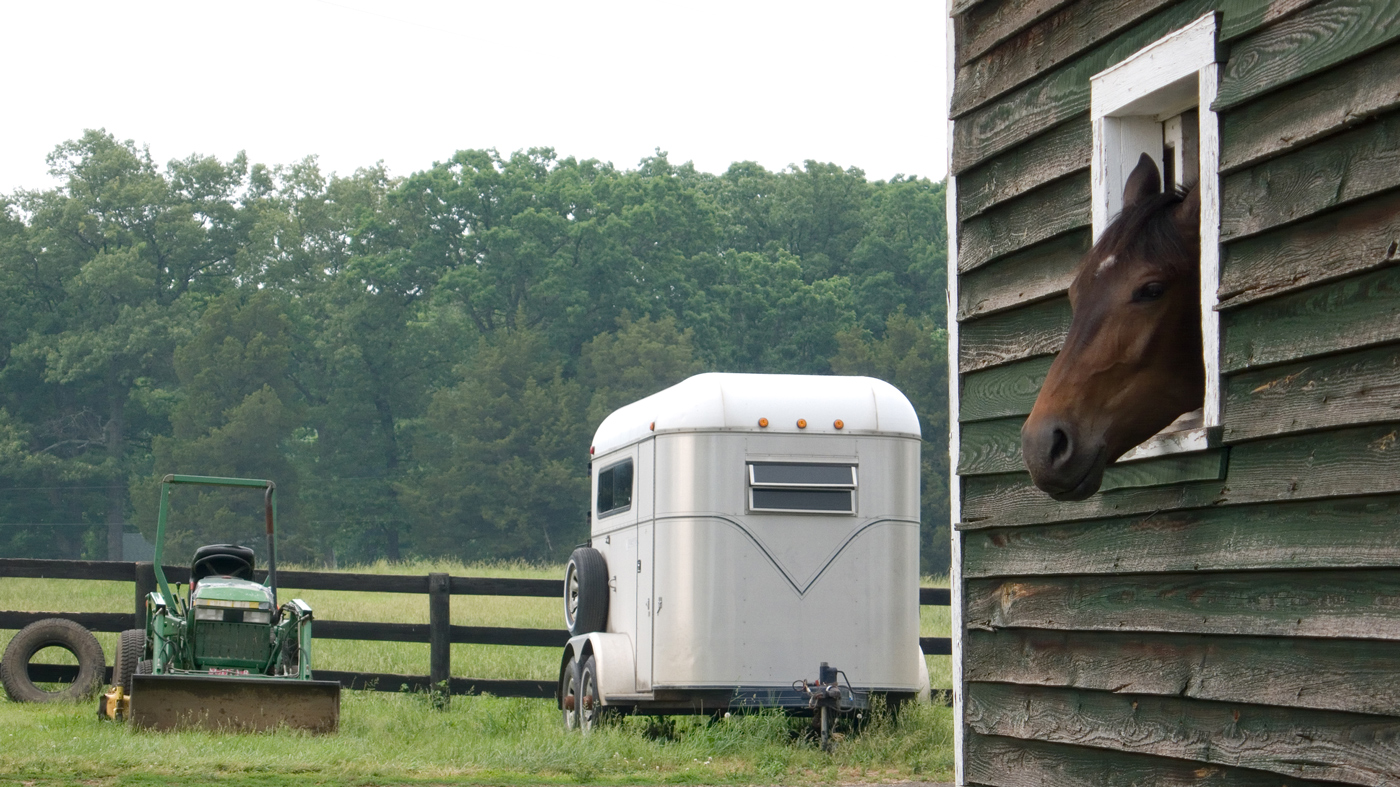
-
Take any used horse trailers for a test drive to check they tow evenly
If possible, there’s nothing better than taking a trailer for a test drive before buying. Start off at around walking speed to check if everything seems right. Increase your speed to around 10mph and see if there’s any drag or uneven pull.
Try the brakes to check stopping power. Does the trailer move from side to side when driving or braking? Now increase the speed to around 40mph and check for stability or swaying. Does the trailer follow straight behind your vehicle? Finally, slow down and stop. Did you notice any problems stopping or controlling the vehicle or trailer?
-
Does the trailer have a good service or maintenance history?
When was the trailer last serviced? What maintenance work has been done on the trailer? Does the seller have any invoices or paperwork to support that? If the used horse trailer sounds very cheap, be warned.
-
Get a receipt and ask about a warranty
Some used horse trailers can be almost new. If so, is there a manufacturer's warranty still in effect and can it be transferred to you? Always request a signed receipt that includes the seller’s address.
So, there you have it: the 20-point checklist for buying a second-hand horse trailer. If you have any questions or concerns then comment below and we’ll see if we can help.










